Focus On: Education
Each month we take a look at one of the ten priority areas of the strategy for Scotland’s museums and galleries.
This time we’re exploring the education priority area of the strategy. This page is full of advice and resources to help you and your museum or gallery make progress on the strategy’s education objectives.
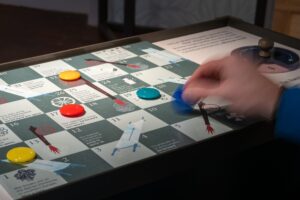
What is education?
Education is all about learning and teaching. It can be formal or informal, and take place in any setting- including museums and galleries. These spaces can have a transformative impact on education by providing people of all ages with a stimulating, playful, and inspirational learning environment.
One of the aims of the strategy is that museums and galleries will support Scotland’s educational system and be recognised as key providers of opportunities for wide-ranging lifelong learning.
You can read the education priority area and actions in full at our strategy hub.
Take steps towards achieving the education aims of the strategy by exploring the resources below.
Looking to develop play-based learning activities at your museum or gallery? Get inspired by these creative ideas from across Scotland:
Culture Perth and Kinross: CPK Play website
Scottish Maritime Museum: ‘Come and Sea Us’ summer activities programme
Go Industrial: Play and learn in museums
The Tall Ship Glenlee: Learning programme
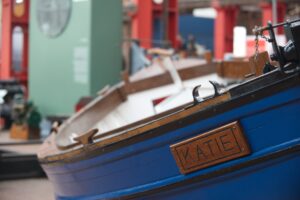
Education at your museum or gallery
Here are some questions to ask yourself if you’re thinking about working with schools and other learning providers.
What can your museum or gallery offer to schools and learning providers? Consider their motivations and needs.
Help schools to fulfil their educational objectives by creating events and activities that support learning in a fun, inclusive, and meaningful way.
Having a safe space for education can allow your organisation to cater to wider audiences such as early years learners and visitors with additional support needs. Read this comprehensive guide on how to create a dedicated learning space.
STEM/STEAM in museums and galleries
STEM stands for Science, Technologies, Engineering, and Mathematics. STEM-related education develops skills and knowledge across these subject areas through interdisciplinary or project-based learning.
It’s increasingly common to see references to STEAM, with an ‘A’ added for Arts. This represents the interconnectivity between nature and the application of science.
Museums are well-placed to support STEAM delivery in creative ways. Interdisciplinary education and play-based learning can encourage children to develop:
- open and careful observations
- logical and critical thinking
- objective evaluation
- improvements and innovations – ‘thinking outside the box’
Examples of STEAM in Scottish museums and galleries include Learning Through Pictures by the National Galleries of Scotland, Go Industrial’s learning from home resources, and Money Marvels by Edinburgh’s Museum on the Mound.
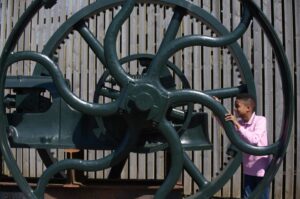
Education resources
Education case studies
These museum case studies include innovative digital resources, schools engaging with museum collections, and lessons on the climate crisis.
Advice topic: education, access, and engagement
Explore our resources on how to engage with both formal and informal learners at your museum or gallery.
Curriculum for Excellence
The Curriculum for Excellence framework puts learners at the heart of education. It aims to ensure that young people gain the knowledge, skills, and attributes needed for life in the 21st century.
All Learners in Scotland Matter
This is a summary of the final report of the National Discussion on Education, which was published by the Scottish Government in May 2023.
Museums for the Future
This toolkit offers museums a new and exciting way to work with schools. It encourages young people to develop critical investigation, comprehension, literacy, numeracy, and creativity by working with museum objects.
Education Scotland: additional support
The Education Scotland website has information on how to work with learners that have additional support needs.
Undivided Identities by Glasgow Museums
This excellent digital learning resource explores themes of empire, displacement, and identity. Its inclusive approach to these topics supports a progressive curriculum.
In 2020, National Museums Scotland conducted a Teachers’ Digital Learning survey. When teachers were asked which topics they would most like for NMS to develop into online learning resources, their top responses were STEM (Science, Technologies, Engineering, and Mathematics), biodiversity, and the Transatlantic slave trade.
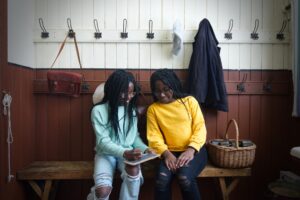
MGS funding
The education aims of Scotland’s museums and galleries strategy are reflected in our grants outcomes and expectations.
Funding applications must address one or more of our grants outcomes depending on the requirements of the fund. Projects may include educational objectives such as engaging with a wider range of audiences and offering learning opportunities which enhance their quality of life.
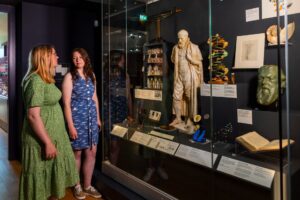
Find out more
The ten priority areas of Scotland’s museums and galleries strategy are interconnected. Working on the education aims of the strategy might also lead to progress in other areas such as diversity, climate action, and health & wellbeing.
Our next are of focus is the skills & confidence priority area of the strategy. If you have any resources, case studies, or questions relating to the education or skills & confidence priority areas, please get in touch.